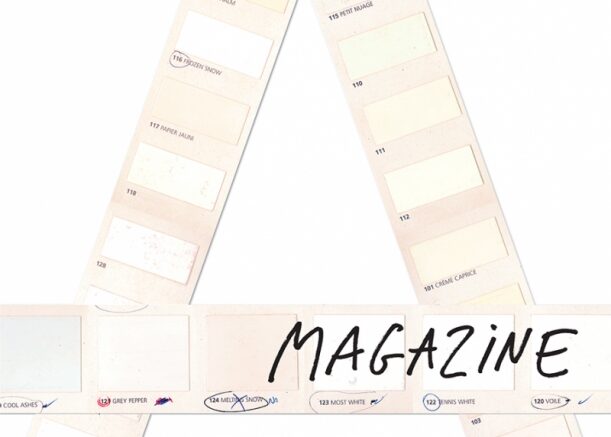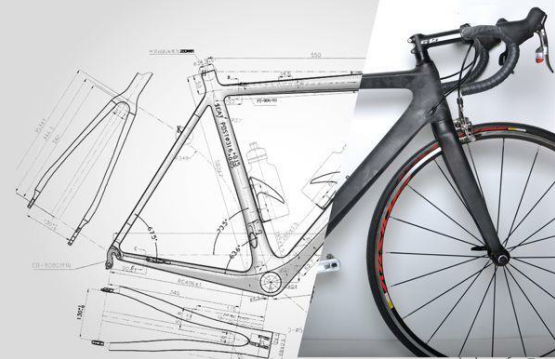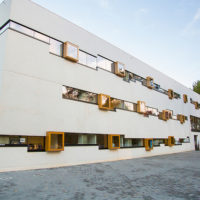Wanderful Loves
When it comes to cycling, Limburg has a good reputation, and not only because of the cycle route network. Open innovation centre Flanders’ Bike Valley was set up 2013, by five businesses involved in the sport of cycling: Ridley, Bio-Racer, Lazer, Flanders’ Drive and Voxdale. In addition, there is now a BikeVille Incubator, which acts as a research and testing centre. The story by front runners in the peloton: Marc Hufkens of Flanders’ Bike Valley
Wind resistance at low speed
Bicycle manufacturer Ridley, speed wear manufacturer Bioracer and helmet maker Lazer are investing together in high-tech research into aerodynamics. To that end, Flanders’ Bike Valley was set up in Beringen, and a striking feature is the realisation of a wind tunnel.
The driving force behind Flanders’ Bike Valley is CEO Bert Celis and chairman Marc Hufkens. “I took part in competition cycling from my fifteenth to my twenty-seventh, as an amateur,” says Marc Hufkens before the interview starts, “and I’ve been involved in the bike and sporting goods industry for twenty-five years.” He was right hand to Jochim Aerts, CEO of Ridley, from 2010 to 2014.
Exchange pays off
“At the opening of the new Ridley bike factory in Beringen, Jochim Aerts came over really ambitious.” Marc Hufkens recalls animatedly. “He announced he was going to build a wind tunnel. He knew what he was talking about, since his business is a world leader in the technology of frame building and aerodynamics, but how do you go about something like that and, more importantly, is it affordable? Very soon, however, the huge investment turned out to be too much for one company. And why focus only on bikes?”
Bearing in mind both the volume of investment and the capacity utilisation of such an installation, more parties than just a bike manufacturer would be needed. The ideal partners were found in Bioracer and Lazer, both leaders in their respective sectors of cycling wear and helmets. “They each thought they knew more about aerodynamics than the other,” says Marc Hufkens, “but since they were not in direct competition, they said: why not? They soon learned an awful lot from each other!”
1 + 1 = 3
Marc Hufkens was given the task of putting the puzzle together and getting everyone on the same page. “Thanks to mutual agreements, the initial cautiousness soon turned to enthusiasm, and the diversity of backgrounds and experience turned out to be so complementary, that it speeded up the innovation, rather than slowed it down. Flanders’ Bike Valley, as umbrella organisation, gives extra support to the individual companies involved.”
And as a competence centre, Flanders’ Bike Valley takes as broad a view as possible of cycling. “Open innovation, from an independent position, and without any exclusivity,” is how Marc Hufkens describes the aim. “Our projects have six pillars: three concerning the cycling experience – for example through tourism and recreation, including the unique Limburg cycle route network – and three concerning product design, process innovation and marketing. The pillars are mutually reinforcing.”
The wind tunnel
The wind tunnel in Flanders’ Bike Valley, opened in spring this year, is the absolute cream of the crop. “Experiments surrounding aerodynamics in wind tunnels exist in the aerospace and Formula 1 industries, but they involve extremely high speeds and heavier vehicles than bikes. We wanted to test wind resistance at speeds of 30 to 50 kph, to a maximum of 110 kph, which offers perspectives for downhill cycling, skiing, skating, bob-sleighing, sailing.” In short, measuring the effects of micro-aerodynamics.
“We measure and chart in the wind tunnel what happens during motion: the air layer is broken open, closing itself again behind the moving object, preferably with little turbulence, which sucks the object backwards. The research results can help makers of helmets, bikes and textiles to adapt their products, so that the air closes behind the moving object, without any turbulence. Despite huge investments in Alpine skiing, for example, the sport has not yet advanced to the stage that ski suits have been optimised within the limits permitted. This is pioneering work.”
Network economy
Marc Hufkens is convinced that a number of Belgian athletes, in various sports, would do better in international competition, even to the extent of winning the medals they now miss out on, if that optimisation were to take place within the sphere of influence of the technological research. “In addition to the effect on high-level sport, there is also a functional advantage in ‘normal’ society,” Marc Hufkens goes on to say. “The range of batteries for e-bike or electric cars could be significantly increased, if we were to optimise the aerodynamics.”
He believes that the age in which producers and their engineers try to know everything, is over. “Flanders’ Bike Valley shows that the exchange of expertise in open innovation projects leads to faster development than the businesses could ever realise individually. We’re like an economic dating agency, giving everyone involved a competitive lead. The future lies in the network economy, and innovation is imperative. Our unique vision can be a role model for stimulating the forming of clusters.”
[KADERTEKST:] BikeVille Incubator
From the same philosophical point of view, in a building called BikeVille, Flanders’ Bike Valley’s campus offers 2400 m² of premises to 25 start-ups, or spin-offs from existing companies in the bicycle sector who want to plug into the innovation, collaboration and exchange energy coursing through the institute in Beringen. Incidentally, the town of Beringen includes Flanders’ Bike Valley in guided tours, to show people the unique project.


